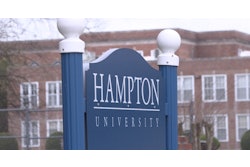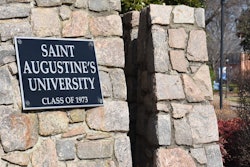The Top 100:Interpreting the Data
By Dr. Victor M. H. Borden and Pamela C. Brown
The current year, 2004, marks a monumental year in higher education for students of color. This year, we celebrate the 50th anniversary of the Brown v. Board of Education decision, which declared racial segregation in public education settings unconstitutional. Despite the gains that have been made in increasing access to higher education for African American, Hispanic, Asian American and American Indian students, there remain persistent gaps in minority-student attendance, and especially attainment. The large increases in minority-student college enrollment parallel the overall increases in the minority population. And, although college attendance rates have increased among most minority groups, there remain persistent gender gaps and significant gaps in degree attainment.
Issues of enrollment, persistence and graduation will be at the forefront of legislative decisions as Congress works to reauthorize the Higher Education Act. It is also expected that Congress will approve increased financial support for historically Black colleges and universities and other minority-serving institutions as they continue to play a pivotal role in conferring degrees to students of color. For the 13th consecutive year, we present to you a listing of the most productive institutions in conferring baccalaureate degrees to students of color. We also include in this analysis a look at some of the trends related to minority-student degree attainment. Before examining those trends, it is important to consider the source and limitations of the national data used to produce this analysis.
This edition of the Top 100 analysis considers degrees awarded during the 2002-2003 academic year. The data come from the U.S. Department of Education’s National Center for Education Statistics (NCES) Integrated Postsecondary Education Data Set (IPEDS). In order to provide the most currently available data, we must rely on the “preliminary” files, which are complete and accurate for those institutions included in the analysis, but do not necessarily include every postsecondary institution in the “IPEDS Universe.” Fortunately, there are only a few missing cases among the type of institutions included in this analysis — Title IV eligible colleges and universities in the 50 states and the District of Columbia that confer baccalaureate degrees.
The data for this study are collected by NCES through the IPEDS Program Completer’s Survey. Specifically, this survey asks for the number of degrees and other formal awards conferred in academic, vocational and continuing professional education programs. NCES uses the Classification of Instructional Program (CIP) codes which provide a common set of categories from which institutions can report their data, allowing comparisons across all colleges and universities.
The lists included in this analysis are based on students’ racial or ethnic status. Students self-report this information during their college career by choosing among a set of categories. While institutions may vary in the specific categories they offer, they must report their enrollments and degrees to NCES using standard federal categories: non-resident alien; Black, non-Hispanic; American Indian or Alaskan Native; Asian or Pacific Islander; Hispanic; White, non-Hispanic; and race/ethnicity unknown. Only U.S. citizens or permanent residents are included in the minority categories — Black, non-Hispanic; American Indian or Alaskan Native; Asian or Pacific Islander; and Hispanic.
The lists presented in this issue array the Top 100 degree-granting institutions for each minority group overall, and the Top 50 institutions that conferred degrees within specific disciplinary areas, such as business, health sciences, etc. The lists may include slightly more or less than 100 or 50 institutions due to ties in rank at the end of the list. That is, if a number of institutions are tied at one of the lower ranks, we will often stop the list just shy of the target count or go a little beyond the count to accommodate the last group.
Within each list, we present the total number of degrees conferred by the institution for the prior year (2001-02), followed by the count for the current year (2002-03) for men, women and then total. The counts are followed by two percentages. The first one shows how the number of degrees conferred to that particular racial/ethnic group stands in proportion to all degrees conferred at that institution (across all disciplines for the Top 100 lists and within each discipline for the Top 50 disciplinary lists). The second percentage column represents the percentage change in total degrees between the prior and current year.
Most U.S. higher education institutions report their numbers independently of other institutions with which they may share system ties. However, some institutions pool their numbers as part of a larger reporting entity. The lists note those “multi-institutional” reporting entities with an asterisk by the state designation.
TRENDS IN BACCALAUREATE DEGREE CONFERRALS
We start this year’s analysis by extending the trend line we presented last year regarding the conferral of baccalaureate degrees to African American students by HBCUs compared to all other institutions. The first display shows that HBCUs continue to play an important role, awarding more than one of every five baccalaureate degrees conferred to African American students this past year. However, as a proportion of the total, the contributions of HBCUs have declined over the past 10 years, as their degree conferral numbers have been stable while there has been significant growth in baccalaureate degree conferrals to African American students who enroll at other universities.
The second display probes the changes in baccalaureate degree conferral to African Americans within the non-HBCU institutions. That is, it takes the 54,034 degrees conferred by these institutions in 1992-93 and the 91,649 conferred in 2002-03, and looks at where the growth has been largest by institutional control (public, private-non-profit, and private-for-profit), Carnegie Classification (doctoral/research, master’s, bachelor’s, associate’s, specialized and all others), and region of the country. The first two sets of columns of this display show the number and percentage distributions of degrees within each way of categorizing all the non-HBCU institutions. The final two columns show the percentage growth in each sector as well as the change in percentage distribution.
Public institutions continue to confer the majority of baccalaureate degrees to African Americans, and the number conferred increased by 60 percent between 1992-93 and 2002-03. However, the rate of growth was even greater among private-non-profit institutions and especially private-for-profit institutions, where the number quadrupled. As a result, public institutions lost 4 percent of their “market share” of degree production. Parallel to this change, the doctoral/research institutions, which include many of the large public universities, saw a similar loss of market share even as their production increased by more than 40 percent. The most notable increase in African American baccalaureate degree conferrals occurred among institutions classified as “associate” institutions. These are predominantly community colleges that offer an increasing number of bachelor’s degrees. Chief among these institutions is Miami Dade College, which formalized its expanding baccalaureate degree role in recent years by eliminating the community college distinction from its name.
The Southeast region of the United States increased its market share in African American baccalaureate degree conferral among non-HBCU institutions. This is also the region where the largest number of HBCUs are located. Thus, we are experiencing an increasing concentration of degree conferrals in this traditional African American population center.
THE NATIONAL PICTURE: SIGNS OF TROUBLE
The final display in this analysis looks again at the entire national picture, bringing back into play the degrees conferred at HBCU institutions. The purpose of this display is to examine how African American representation among baccalaureate degree recipients compares to African American representation among the enrolled undergraduate, degree-seeking student body. Ten years ago, when we began publishing these lists, there was an overall gap of 4 percent. Whereas African American students comprised 10 percent of all undergraduate degree-seeking students, they comprised only 6 percent of all baccalaureate degree recipients. Even within HBCUs, where 86 percent of enrolled students were African American, their representation was 6 percent less among baccalaureate degree recipients.
When sorting institutions by Carnegie Classification, the most significant gap in 1992-93 was among the associate level institutions. However, it is important to remember that very few baccalaureate degrees were conferred by these institutions at that time. It is also important to note that this analysis includes only those associate level institutions that also award baccalaureate degrees.
By the 2002-03 degree conferral year, the overall representation gap between enrolled and degree recipient groups was cut in half to only 2 percentage points. While overall representation among enrolled students increased by only 1 percentage point (from 10 percent to 11 percent), the representation of African Americans among baccalaureate degree recipients increased by 3 percent from 6 percent to 9 percent. Just as importantly, the size of the gap narrowed across virtually all institutional types. Among HBCUs, the 6 percent gap from 1992-93 completely disappeared. More notably, the gap became positive among those associate level institutions that award baccalaureate degrees, where the overall enrollment rate of 13 percent is 6 points less than the 19 percent representation rate of African Americans among baccalaureate degree recipients.
While it is very positive to see the narrowing of this representational gap, a gap remains and, perhaps more importantly, the 9 percent representation of African Americans among baccalaureate degree recipients and even the 11 percent among enrolled students still trails the overall representation of African Americans in the U.S. population, which is just over 12 percent according to the 2000 U.S. Census. In addition, the representation of African Americans is notably low (8 percent of enrolled students and 6 percent of degree recipients) among the doctoral/research universities, which prepare the largest number of students for advanced graduate study.
The number of African Americans and other students of color attending and graduating from college continues to climb. Representational gaps appear to have narrowed considerably over the past 10 years. However, there are signs of trouble on the horizon. With increasing costs and increasing levels of debt burden, the public investment in higher education appears to be dwindling at the same time that higher education is more closely tied to economic, personal and community vitality. We will continue to monitor these trends with a watchful eye, hoping for signs of continued improvement but remaining diligent to ensure that the gains of the last 50 years continue unabated.
— Dr. Victor M. H. Borden is associate vice chancellor and
associate professor and Pamela C. Brown is an enrollment specialist at Indiana University-Purdue University Indianapolis.
© Copyright 2005 by DiverseEducation.com















